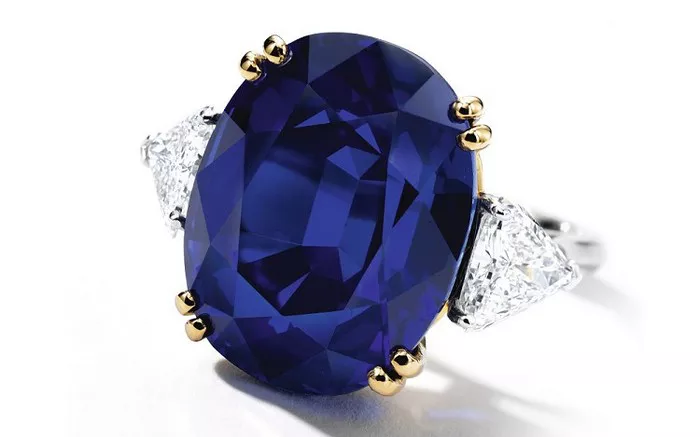Jewelry has been an integral part of human culture for thousands of years, serving as symbols of status, beauty, and personal expression. Among the myriad of gemstones available, sapphires have always held a special place, particularly in the form of rings. Yellow sapphires, with their warm and vibrant hues, are especially popular. Recently, lab-made yellow sapphires have emerged as a viable alternative to natural ones, sparking a debate about their potential to replace the traditional gemstones. In this article, we will explore the characteristics, production processes, advantages, and limitations of lab-made yellow sapphires, and assess whether they can indeed replace natural ones.
Characteristics of Yellow Sapphires
Yellow sapphires belong to the corundum family, which includes rubies and other colored sapphires. Their yellow hue is caused by trace elements such as iron and titanium, which absorb certain wavelengths of light and reflect others. Natural yellow sapphires can range from a pale yellow to a vivid orange-yellow, with some exhibiting a phenomenon called asterism, where tiny needle-like inclusions create a star-like pattern when light passes through the gemstone.
Lab-made yellow sapphires, also known as synthetic sapphires, are created in a controlled environment that mimics the natural processes of gemstone formation. These gemstones are chemically and physically identical to natural sapphires, but their production can be tailored to produce consistent colors and clarity levels that may be difficult to find in natural stones.
Production Processes of Lab-made Yellow Sapphires
The production of lab-made yellow sapphires involves several steps, each requiring precise control and expertise. The process begins with the selection of raw materials, which include aluminum oxide (the main component of corundum) and trace elements that will give the sapphire its yellow hue. These materials are then mixed in a specific ratio and heated to extremely high temperatures, often exceeding 2,000 degrees Celsius.
Under these conditions, the raw materials melt and reform into a crystalline structure that resembles natural corundum. The melted mixture is then cooled slowly to ensure that the crystals form in a controlled and orderly manner. This process is called crystallization, and it is crucial for producing gemstones with the desired optical properties.
Once the crystallization process is complete, the resulting sapphire boule (a large, rough gemstone) is cut and polished to reveal its brilliant color and clarity. This step requires skilled craftsmanship and precision, as the final appearance of the gemstone depends heavily on the quality of the cutting and polishing work.
Advantages of Lab-made Yellow Sapphires
Lab-made yellow sapphires offer several advantages over natural ones, making them a viable alternative for many consumers.
Consistency in Quality and Appearance
One of the most significant advantages of lab-made sapphires is their consistency in quality and appearance. Natural sapphires can vary widely in color, clarity, and cut, making it difficult to find two stones that match perfectly. Lab-made sapphires, however, can be produced to exact specifications, ensuring that every stone has the same color, clarity, and cut. This consistency is particularly important for jewelry manufacturers who need to produce large quantities of matching gemstones for a single design.
Ethical and Environmental Considerations
The mining of natural gemstones can have significant environmental and ethical impacts. Mining operations often involve the destruction of natural habitats, and workers in mining communities can face dangerous working conditions and low wages. Lab-made sapphires, on the other hand, are produced in controlled environments that minimize environmental impact and ensure safe working conditions for all involved.
Cost-Effectiveness
Natural sapphires, especially those with vivid colors and high clarity, can be extremely expensive. Lab-made sapphires, however, are produced in a more cost-effective manner, making them more affordable for consumers. This price advantage is particularly significant for those who want to own a piece of jewelry with a high-quality gemstone but have a limited budget.
Limitations of Lab-made Yellow Sapphires
Despite their advantages, lab-made sapphires also have some limitations that may affect their suitability as replacements for natural ones.
Perceived Value
For many people, the perceived value of a gemstone is closely tied to its rarity and natural origin. Natural sapphires are rare and have a long history of being valued as precious gemstones. Lab-made sapphires, while chemically and physically identical, may not have the same cachet or emotional significance for some consumers.
Resale Value
Natural sapphires often retain their value over time, making them a good investment. Lab-made sapphires, however, may have a lower resale value, as their production is not limited by natural scarcity. This can be a concern for those who plan to sell their jewelry in the future.
Unique Characteristics
Each natural sapphire has unique characteristics that make it one of a kind. These characteristics, such as inclusions, color zoning, and natural fractures, can add to the beauty and uniqueness of the gemstone. Lab-made sapphires, while consistent in quality, may lack these unique characteristics that many collectors and enthusiasts value.
Can Lab-made Yellow Sapphires Replace Natural Ones?
In conclusion, lab-made yellow sapphires offer several advantages over natural ones, including consistency in quality and appearance, ethical and environmental considerations, and cost-effectiveness. However, they also have limitations, such as perceived value, resale value, and unique characteristics, that may affect their suitability as replacements for natural sapphires.
Conclusion
Ultimately, whether lab-made yellow sapphires can replace natural ones depends on the individual consumer’s preferences and needs. For those who prioritize consistency, affordability, and ethical considerations, lab-made sapphires may be the ideal choice. For those who value rarity, emotional significance, and investment potential, natural sapphires may be the better option.
Related topic:
- What is the use of pink sapphire
- What Are 5 Interesting Facts About Sapphire
- Sapphires VS Rubies: Which is Better?


